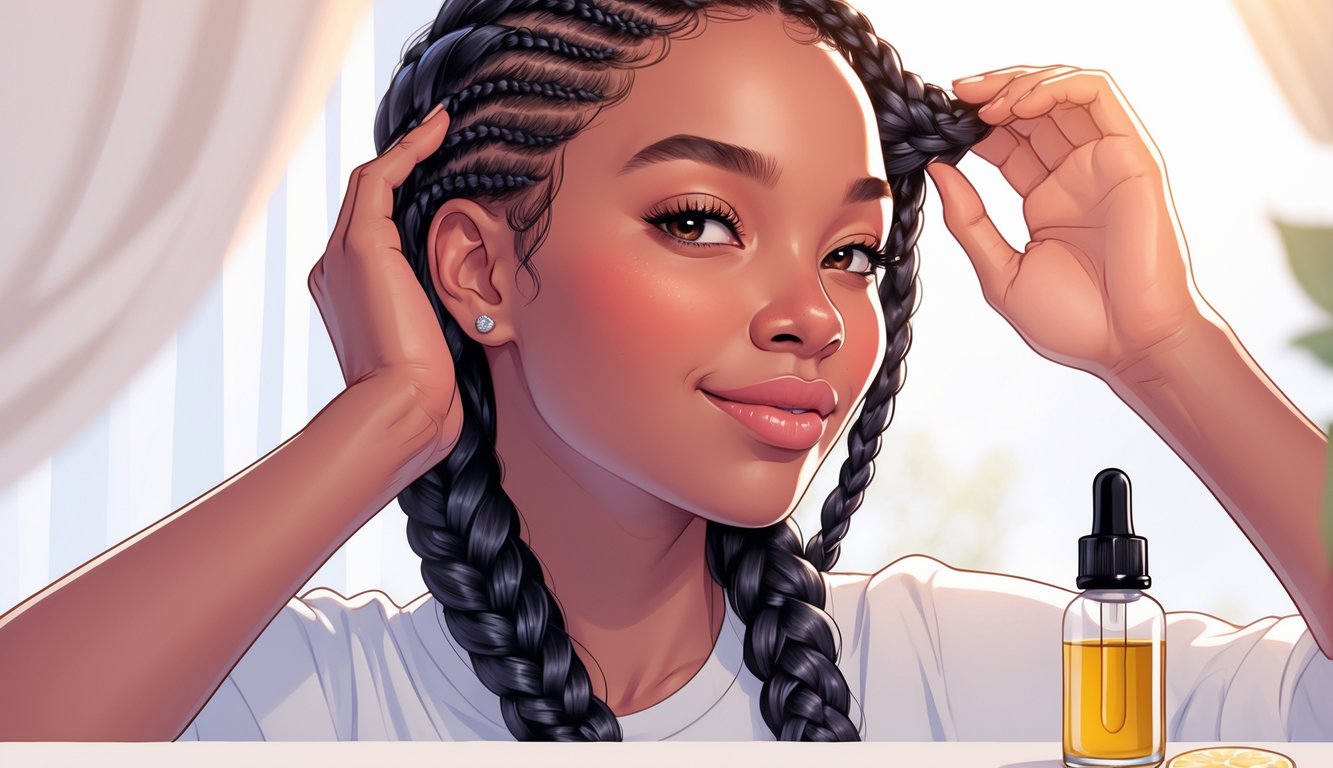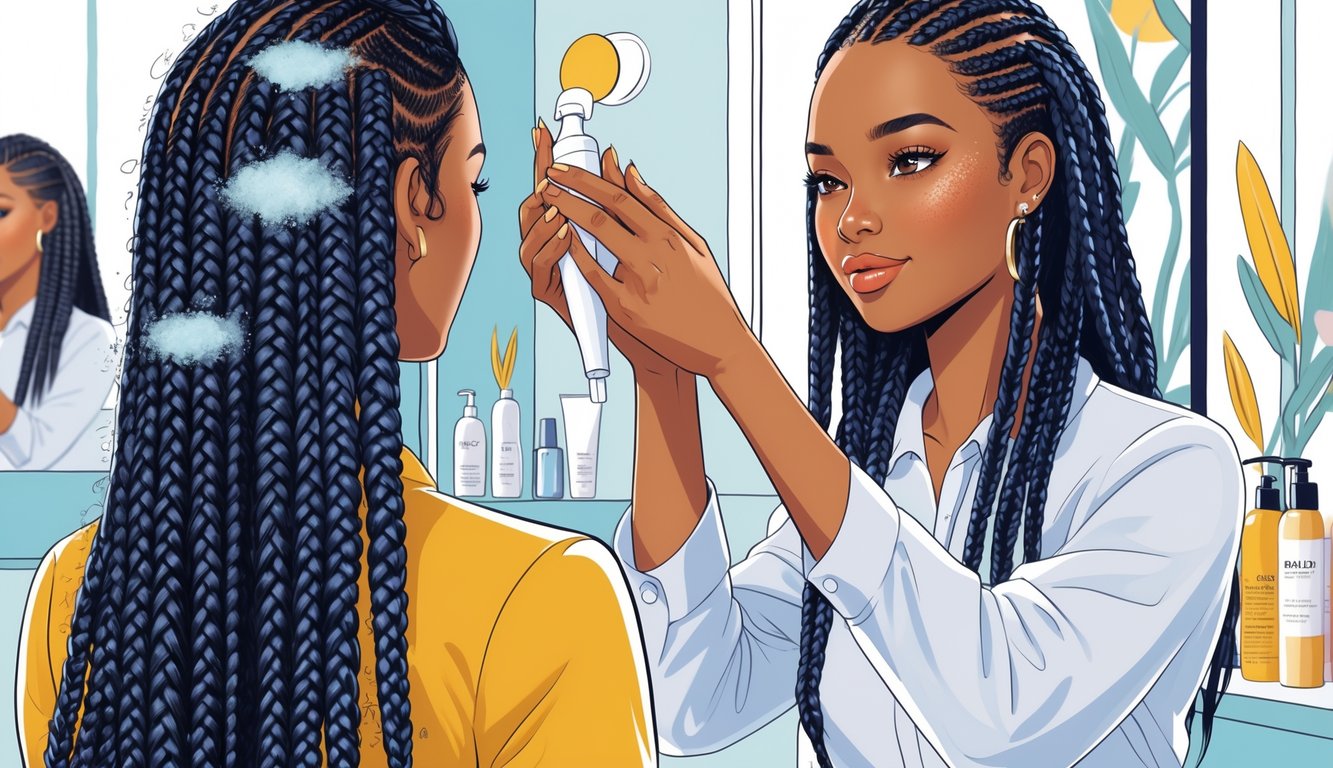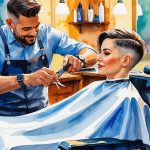
So, real talk: every morning, I wake up and it’s like—bam, that fuzzy mess clinging to my box braids, mocking me. Static, but somehow meaner. I’ve tried every “miracle” frizz tamer out there—spoiler, most of them flop. Those smoothing shampoos with “advanced polymers”? Sure, science words, but my edges still puff up the second I step outside. My stylist once kind of mumbled, “Just use mousse, seriously,” and, okay, I was skeptical but desperate. Turns out, lightweight mousse on dry braids plus tying it all down with a scarf for, like, twenty minutes actually works. Not perfectly, but way faster and smoother than oil or gel ever did.
YouTube “experts” and this trichologist I randomly DM’d both said half the frizz battle is just covering your hair at night. Which, great, but who’s honestly not fallen asleep mid-Netflix, scarf nowhere in sight? Miss one night and suddenly I’m in the “do I have to rebraid this whole section?” zone. Also, why does nobody ever warn you about that weird crispy mousse feeling if you use too much? It’s gross.
Sometimes, it’s not even the hair’s fault—humidity just decides to ruin your life, and my arms are too tired to care. But, every pro I’ve met, the ones who actually braid for a living, always have mousse and a scarf in their kit. Like, always. Edge control? Eh, nobody ever finishes a whole jar anyway.
Understanding Braid Frizz Problems

Frizz on braids. It’s so annoying. My edges rebel, fuzz pops up right after wash day, and “anti-frizz” sprays? Mostly hype. The real stuff? Texture, climate, braid size—all that actually matters. Nobody’s selling you a magic potion for this.
What Causes Frizz In Braided Hairstyles
If one more person blames “bad technique,” I might scream. Sweat, product buildup, and humidity just gang up on you. Hair literally swells when it’s humid (International Journal of Cosmetic Science, 2022, if you care). Unless you live in a climate-controlled bunker, you’re fighting a losing battle after day two.
Stylists keep saying to braid on clean, stretched hair. But, honestly, who actually does that every time? Even a smidge of regrowth makes frizz go wild. And don’t even get me started on rough synthetic hair—so much friction. Add tension headaches and suddenly your braids look like you rolled down a hill.
Types Of Frizz: From Flyaways To Fuzz
Flyaways are chaos gremlins. Sometimes it’s just one wiry hair at the front, sometimes it’s a full-on fuzz halo because I skipped my scarf (again). And yeah, I know better.
Different hair types, different frizz drama. I spritz, and broken hairs pop out more. Fuzz is that sneaky, cloudy stuff along the braid length—usually happens if you keep fiddling with your hair or skip bedtime routines.
Who really spends fifteen minutes on their edges every night? Not me. Maybe for a week after a fresh install, then I’m over it. Even “frizz-free” Kanekalon doesn’t save you if your hair’s fine or porous. I see pros double up on mousse and setting foam (Nairobi, Lottabody, whatever’s on sale), but honestly, there’s no single magic step.
How Hair Type Influences Frizz
Fine hair? The braids unravel and frizz fast. My coarse, coily hair? It puffs up overnight if I forget my bonnet. High-porosity hair? It just soaks up humidity and then boom—frizz city in the morning.
Straight hair people complain about slipping, not frizz, so that’s a whole other headache. Dr. Kari Williams (trichologist, legit) says thick, kinky textures need regular moisture and gentle handling or you’ll get breakage and wild frizz.
Family group chat: remember when Aunt Ty said oil only the scalp, not the braids? Yeah, turns out that’s not always true. Oils help some hair types, do nothing for others. I guess blaming moon phases for frizz isn’t the move anymore, but it felt better than this chaos.
The One Fix Top Braiders Rely On Right Now
Redoing braids every two days? No thanks. My wrists hurt just thinking about it. Edge control melts off by lunch. But mousse? Every pro I know has a can in their kit, like it’s contraband. They swear by it for keeping braids smooth—even on the most stubborn hair.
Breakdown Of The Go-To Method
Here’s what I keep seeing: every decent braider grabs a lightweight foaming mousse (Nairobi, LottaBody, nothing fancy) right after finishing braids. No gatekeeping. They foam it up, smooth it over every single braid from roots to tips. My friend Charelle? She goes through half a can per client, no joke. She drowns knotless braids in mousse, then wraps everything with a silk scarf (not cotton, don’t even try), and hits it with a hood dryer or blow dryer on low for five to ten minutes. I thought it’d get crunchy, but nope—no residue, and the frizz stays away for a week, sometimes longer. I checked the forums—Braids By Mick, 200k followers—same story. I’m suddenly questioning why I ever wasted money on edge control alone.
Why Professionals Swear By It
Think you can just lay your edges and call it a day? By day three, the fuzz is back. Mousse actually seeps in and holds everything down—even after late-night snacks when you’re scarfing takeout and forgetting your hair routine.
Pros keep telling me nobody wants sticky gels or oil that collects lint. Clients come back because their styles last. Sasha, a stylist I trust, said her “emergency braid redo” bookings dropped in half since she switched to mousse and a scarf. Reviews are wild—people love how mousse softens and neatens without fake shine. And there’s this weirdly satisfying moment when you pull off your scarf and see zero new fuzz. Kind of makes me wonder why we all obsessed over edge control for so long.



